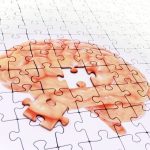
A new slow-release pill form of ketamine can quell hard-to-treat depression without producing psychedelic side effects normally associated with the drug, early research suggests. Patients on the strongest dose of ketamine tablets saw significant improvement in their depression compared to a placebo, researchers found. On a 30-point depression scale, people taking the ketamine pill improved by 14 points, while the placebo group had an average reduction of 8 points. The tablet could provide an improvement over ketamine injections and nasal sprays, which already are used to treat depression, said researcher Colleen Loo, a clinical psychiatrist with the University of New South Wales in Australia. A derivative of ketamine called esketamine (Spravato) is already approved in the United States for treatment-resistant depression in adults. It comes as a pill, nasal spray or injection, but these all work quickly and produce psychedelic effects. “This is a way of administering ketamine to treat depression that’s much easier to give,” Loo said in a university news release. “Rather than having to come to the clinic and have an injection and have medical monitoring for two hours, once or twice a week, this is much more convenient and allows patients to have their treatment at home, making it as convenient as other antidepressant medications.” Extended-release ketamine also doesn’t cause the hallucinations typically associated with the drug, Loo added. It had… read on > read on >



























-300x200.jpg)










